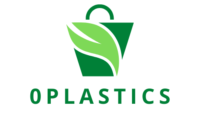Compostable materials are designed to break down naturally in composting facilities and return to the environment as organic matter. They offer an eco-friendly alternative to traditional plastics, as they do not persist in the environment for extended periods and can reduce the environmental impact associated with single-use items. Here’s how compostable materials work and where they can be used as plastic alternatives:
How Compostable Materials Work:
- Biodegradability: Compostable materials are made from organic substances, often plant-based polymers like cornstarch, sugarcane, or potato starch. These materials are biodegradable, which means they can be broken down by microorganisms into natural substances such as water, carbon dioxide, and organic matter.
- Composting Conditions: Compostable materials require specific conditions to biodegrade properly. These conditions typically include the right combination of heat, moisture, and microbial activity, which are present in industrial composting facilities. Home composting may also be possible under certain circumstances, depending on the specific product and local composting guidelines.
- Certification: Compostable materials should meet recognized standards and certifications, such as ASTM D6400 and EN 13432, to ensure their biodegradability. These standards validate that the materials break down within a reasonable timeframe and do not leave harmful residues.
- End-of-Life Options: When compostable materials are disposed of in an appropriate composting facility, they break down into organic matter. The resulting compost can be used to enrich soil and support plant growth, closing the loop of sustainability.
Applications of Compostable Materials as Plastic Alternatives:
- Food Packaging: Compostable materials can be used for food packaging, including containers, cutlery, plates, and wraps. They are suitable for takeaway food service and catering events, reducing the need for traditional plastic and styrofoam packaging.
- Single-Use Items: Compostable materials are excellent alternatives to single-use plastic items like straws, coffee stirrers, and utensils. They help address plastic pollution concerns and are commonly used in foodservice industries.
- Bags: Compostable bags, including grocery bags and trash bags, provide a sustainable option for consumers. They are designed to break down in composting facilities, reducing the environmental burden of single-use plastic bags.
- Agriculture and Horticulture: Compostable materials can be used as mulch films and plant pots in agriculture and horticulture. They break down into compostable material, reducing the need for plastic materials in farming and gardening.
- Textiles and Apparel: Innovations in the textile industry have led to the development of compostable fabrics and clothing. These materials can be worn and disposed of in composting facilities.
- Personal Care Products: Some personal care products, like disposable diapers and sanitary products, are available in compostable alternatives. They offer a sustainable option for individuals seeking eco-friendly choices.
- Event Supplies: Compostable tableware, drink cups, and serving utensils are commonly used for events and gatherings to reduce the environmental impact of single-use items.
- Packaging Materials: Compostable materials can be used as cushioning and protective packaging for shipping fragile items. They offer a sustainable solution for reducing plastic packaging waste.
Compostable materials provide a valuable alternative to traditional plastics, particularly in applications where single-use items are prevalent. However, their effectiveness depends on the availability of composting facilities and proper disposal practices. To maximize the environmental benefits of compostable materials, it is crucial to ensure that they are managed in a way that supports their intended biodegradation.
